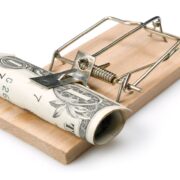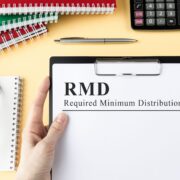KEY POINTS
- The CARES Act allows people facing hardships from the pandemic to withdraw approximately $100,000 from a 401( k) plan or from a specific retirement account this year.
- Affected people can spread the income and taxes over the course of 3 years. The CARES Act likewise waives the 10% penalty for withdrawals taken before age 59 & frac12;
- Took money from your savings? It’s time to think about how you’ll handle next year’s tax expense.
Under almost any situation, tapping your retirement plan cost savings for money is a bad concept.
Tax professionals and monetary advisors will almost universally tell you to use all other sources of liquidity prior to you hit your tax-advantaged pension.
“Specific IRAs and certified strategies are secured from financial institutions,” said Ryan Losi, a CPA at Piascik. “If you’re looking at insolvency, the worst thing you can do is take money out of those strategies, pay taxes on it, and make it offered to creditors.”
But for countless Americans who have suffered financially as an outcome of the coronavirus pandemic, retirement strategy cost savings may now be their only source of money.
Enter the coronavirus-related distribution.
Under favorable terms given as part of the federal CARES Act passed in late March, qualified people can withdraw as much as $100,000– called a coronavirus-related distribution– from certified plans, including 401( k) plans and specific retirement accounts.
SEE NOW VIDEO00:01 The CARES Act has increased the 401( k) loan withdrawal limit– Here’s what you need to understand
If you or your partner contracted Covid-19, lost your task, or saw your hours or earnings minimized due to the pandemic, you’re qualified to make the withdrawal.
The very same chooses people who were unable to work because the pandemic led to their losing their child care.
If you have not taken a coronavirus-related distribution from your retirement plan yet, you have until completion of the year to do it.
Allowable under the CARES Act
Generally, withdrawals from these accounts are subject to a 10% penalty if you pull the cash before you turn age 59 & frac12;
The CARES Act waives this charge and allows you to spread out the earnings and taxes over the next three years on your income tax return.
You do not have to pay back the funds, but if you do within 3 years– and file changed returns– there is no tax liability for the withdrawal.
The allowable rule modifications by the IRS are just that: allowable.
It is up to companies whether they change their plans to enable the beneficial distribution terms, so consult your HR department for your choices.
“It always depends on an individual’s particular truths, but we suggest individuals should not do this unless they have no other option,” stated Certified Public Accountant Mark Luscombe, a principal analyst for Wolters Kluwer Tax and Accounting.
“If you do take the withdrawal, you must restore it to the plan when you can.”

Repaying funds now vs paying taxes
If you have currently taken a coronavirus-related circulation, the concern now is whether you re-contribute the funds back to the strategy (or another eligible strategy) and whether you ought to pay taxes on the distribution if you don’t put the money back this year.
On the first front, changing withdrawn funds from tax-deferred cost savings accounts as rapidly as you can is usually an excellent concept.
The length and costs of the average American’s retirement continue to increase, and you may live to be sorry for spending retirement savings now.
“The quicker you repay it, the quicker it starts making a return once again,” stated Luscombe of Wolters Kluwer.
The timing might be better.
Individuals who took circulations earlier this year, lost out, at least to a degree, on among the greatest healings from a bearishness in history. People reinvesting withdrawals back into the stock market now will be doing so at much greater appraisals.
As for how to account for the circulation and when to pay taxes on it, it depends on your monetary scenarios.
If you lost your task or took a struck to income this year, however, anticipate your situation to enhance, you can return the funds within the next three years and file a changed return.
In this method, you get a refund of the taxes you paid in the years the withdrawal was consisted of in your income.
However, if you eventually can’t pay back the cash within three years, you will owe taxes and possible charges.
“If your strategy is to pay back the withdrawal in the next three years, ask yourself how confident you are in your ability to do that,” stated Luscombe.
He advises individuals to pay taxes on one-third of the circulation this year.
One year vs 3 years
People also have the alternative to consist of the totality of the circulation in their income this year.
If your income has been considerably affected this year and the withdrawal doesn’t bump you into a greater tax bracket, it might make sense to acknowledge the distribution more quickly when you’re being taxed at a lower rate.
“In basic, we suggest people defer income and taxes, so my choice would be to spread the withdrawal over the three-year duration,” stated Losi at Piascik.
Nevertheless, he acknowledges that a “blue wave” of Democrats in governmental and congressional elections next month might lead to rate boosts throughout various tax regimes.
While Losi and Luscombe comprehend that retirement strategies might provide the only cash lifeline for many individuals, they suggest using it as a really last resort and paying tax on a minimum of one-third of the circulation this year.
Cut your living costs, delay payments on your home mortgage or student loans, and stop contributions towards other savings objectives like 529 college plans before you tap your retirement cost savings.
“Tire all other liquid possessions before you do this,” stated Losi. “This is the last thing you desire to do.”
























Comments